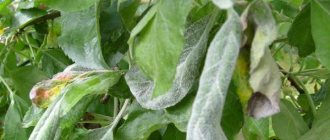How to recognize a peony disease or a pest on it? And what to do with it? Let's try to figure it out.
- Peony diseases and their treatment Rust
- Powdery mildew
- Cladosporiosis
- Lemoine's disease
- Gray rot on peonies
- Withering
- Peony root cancer
- Phyllosticosis
- Ring spot (mosaic) of peonies
- Bronzovka
Treatment of peonies for gray rot
Gray rot (Botrytis) - Botrytis paeonia Oud - is the main and most widespread disease of peonies in our region. As a rule, symptoms of gray rot appear on peonies either in the spring (in central Russia - in the third ten days of April, especially intensively - in the wet season), or in the summer - in early autumn (when it rains and there is high air humidity, with increased soil acidity , excess nitrogen fertilizers, heavy clay soils, high groundwater levels, dense plantings, unventilated areas).
The most dangerous outbreak for plants is the spring outbreak of the disease, at the time of active growth of shoots.
As can be seen in the photo, with this disease in peonies, shoots growing rapidly at this time with very soft tissues are affected where the stems emerge from the ground:
A rotten dark area appears on the side of the stem. Very soon the stem falls. Black sclerotia are visible on rotting tissues.
In other years, at high temperatures during the period of active growth, gray rot of peonies affects the stems in the middle part: the plant bends in this place, the top withers. If the soil is carefully raked away, botrytis damage to the base of the stem will be noticeable on the underground part of the damaged shoot. This is thought to be the result of a short spring quickly turning into hot weather in May.
After sufficient regrowth and hardening of the stem tissues, in the third ten days of May, stunted and weak stems are mainly affected.
The second time the appearance of the disease can be observed in the summer-autumn period. The buds, sepals, and petals (at the base) rot, brown spots with a gray coating appear on the leaves, the stems and leaves darken and dry out. When cutting through a stem affected by the disease, brown rings are visible.
Let us note once again that the external manifestation of botrytis is facilitated by the cold season, rains and high humidity. In almost any adult plant, to one degree or another, traces of botrytis damage are noticeable in the underground part: on the remains of last year’s stems and in the zone of their transition to the rhizome, on old, roots starting to die. But with proper cultivation, its external manifestations will be absent or insignificant throughout the life of the plant.
To treat gray rot of peonies you need:
- compliance with the rules of planting and maintaining plants;
- periodic application of deoxidizing additives to the soil (bone, dolomite, limestone flour);
- removal and destruction of damaged parts of the plant;
- mandatory and timely complete pruning of stems in the fall;
- limited use of nitrogen fertilizers;
- the use of fungicidal drugs and agents for the prevention and suppression of disease.
Most fungicidal preparations produced by the chemical industry are suitable for combating botrytis. Among them are long-known and tested: all copper-containing ones, foundationazole, colloidal sulfur. Timing of their application: in the spring, at the beginning of active growth of stems, in our zone in the third decade of April, and then 1-2 more times with an interval of 10-12 days, depending on the weather and the degree of damage to the plants. It is necessary to strictly follow drug dosage recommendations and observe safety precautions.
To combat this peony disease, the following rules must be followed:
- It is better to alternate different means, this contributes to their more effective action and reduces the accumulation of dangerous drugs in the soil. For example, you could alternate: foundationazole - 0.3% (or equivalent), oxychloride - 0.3% (copper sulfate - 0.5%) and potassium permanganate solution - 0.03%.
- The concentration of preparations with a burning effect (copper sulfate) in the spring when spraying young plants should be half as much as for adults. At this time, young tissues are too soft and delicate and are easily damaged. Strive to use a minimum of chemicals to protect yourself, fauna and soil. If possible, use mistings, and when watering, only wet the top layer of soil above and around the plant using a watering can with small holes. Then you can limit yourself to the norm of 0.5-1.0 liters per peony. No watering the plant from above!
These photos show the treatment of peonies for gray rot disease:
Leaves turn yellow and dry out
At the end of the season, peony leaves turn yellow because this is a natural progression of their life cycle. But if they start to dry out in the middle of summer, it’s time to be wary!
— Yellowness and dryness occur if peonies lack moisture. But you can’t overwater them either, because rotting will begin;
— Scattered yellow stripes and streaks that are increasingly intertwined with each other are a symptom of ring spotting. The virus does not affect the growth and flowering of the plant for a long time, although in the future it may destroy it completely;
— Chaotic yellow spots on the leaves that weave into a pattern and spread further and further - a viral mosaic. At later stages, small necrotic foci appear;
— Verticillium wilt causes the leaves to wither and dry out. Most often it appears during flowering, and the pathogen can be detected by dark vessels in the cut of the shoots;
— The rattle virus was originally tobacco, but has already spread to other plants. It leaves rings, stripes and stains in all shades of pale green and yellow.
Photo: domashniecvety.ru
Fighting root rot of peonies
Root rot. Peonies are also affected by pathogenic fungi from the genera Fusarium, Sclerotinia, Rhizoctonia, and Phytophtora. According to my observations, the disease is rare and it is quite difficult to distinguish between different rots. Externally, the disease manifests itself in the sudden blackening of the stems and their wilting in the middle of summer. The dug up roots look brown, softened to mucus, and emit an unpleasant odor. The affected bush is dug up and destroyed.
The reasons that provoke the disease are the same as for botrytis: wet weather, flooding of the area with melt and rain water, thickened plantings, unventilated areas, acidic soils and replanting in a place previously occupied by peonies.
Control measures:
- use of healthy planting material;
- correct landing;
- use of phosphorus-potassium fertilizers and microelements;
- To treat this disease of peonies, it is necessary to use fungicidal drugs: copper sulfate, Khoma, foundation (0.2%) and others indicated in the table.
Peonies' leaves turn black
Peony leaves rarely turn black, and most often this indicates damage to the root system. Restoring such a plant is very difficult and almost impossible.
— The spots of cladosporiosis are small at first, but later they can completely ring the leaf, turn black and appear scorched;
— Bacterial burn leads to the fact that entire shoots with leaves “burn” to blackness.
Photo: semena-zakaz.ru
Petunia leaf diseases: descriptions with photos, treatment
Treatment of peonies for rust and spotting
Rust - Cronarium flaccidum (Alb. & Schw.) Wint. The disease appears in the summer, usually after peonies bloom. Brown or purple spots become visible on the upper side of the leaves, and orange-brown spots on the underside. Later the leaves dry out and curl. The stems appear undamaged. The host of the infectious agent is Scots pine.
Control measures:
- collecting and burning diseased leaves;
- spraying (wetting) the leaves with fungicidal preparations, the same as for gray rot. As a means of holding the drug on the leaf plates, it is recommended to add a solution of laundry or green soap and a pinch of washing powder.
Spotting. There are a number of different and difficult to distinguish diseases that affect peonies. They cause premature death of leaves and stems. Diseases actively develop at high humidity and temperature. Pathogenic fungi persist on plant debris.
Control measures:
- collecting and burning affected leaves and stems;
- spraying the entire plant with fungicidal preparations, as in the case of rust;
- thorough cleaning in the fall and burning of plant residues of peonies.
Tree peony after flowering
The tree peony has faded - what to do? Once the peony has finished blooming, cut back the spent shoots to the top axillary point, as they will die anyway. In the fall, before the dormant period, feed the plants: add 300 g of wood ash and 200 g of bone meal under each bush, then carefully seal the soil.
Peony mosaic disease: photos and videos of the fight against it
The ring mosaic virus (Ringsort virus) appears externally in the summer after the stems grow, before flowering. Symptoms depend on the variety and its species. Most often, rings, half rings and stripes appear on the leaves, yellow or lighter than the main color of the leaf plate. Otherwise the plant does not look depressed and blooms normally.
The disease is spread by cutting flowers in summer and cutting stems in autumn, as well as by insects sucking plant sap, in particular aphids. The disease is poorly studied and behaves rather mysteriously: it can disappear on a plant and then reappear after a few years.
Opinions on control measures are very contradictory: from the immediate destruction of the plant at the slightest manifestation of the disease to the option “do not touch the plant even if it is completely infected.” It is suggested that the disease exists in a latent form in many varietal peonies, without outwardly manifesting itself for many years.
Control measures . From the moment of regrowth, monitor the foliage of peonies very carefully. Typically, signs of the disease appear before the bush blooms, initially on just a few stems of the plant; the leaves of the remaining stems remain normally colored. The affected stems must be removed completely (unscrewed), and the wounds should be sprinkled with ash. Cut flowers and stems from the affected plant with a separate knife and burn. It often happens that no further traces of the disease appear. If the next year the damage to the plant by the ring mosaic virus is insignificant, repeat the above procedure.
See how the fight against peony disease is carried out in these photos:
If the disease does not disappear, but has captured most of the plant, it is dug up and destroyed. In all cases, if the appearance of a disease was noted on a peony at least once, in the future, when working with it, it is necessary to use a separate tool. Avoid varieties susceptible to the disease.
The video “Peony Diseases” demonstrates the most effective measures to combat diseases:
Below is how to get rid of nematodes and ants on peonies.
Removing buds
In order for peonies to bloom profusely, the buds must be removed. It is especially important to do this in the first and second years after planting, since mass flowering does not allow the root system to fully develop.
If you want large top flowers, remove the side buds when they reach the size of a pea. And, on the contrary, you don’t need to do this if what’s more important to you is not individual cut flowers, but their total number on the bush and its long flowering.
It is very important to remove flowers as soon as they begin to wilt, without waiting for the petals to fall. Otherwise, if they get on the leaves, they can provoke the disease gray rot, especially in rainy weather.
How to get rid of nematodes and ants on peonies
The root-knot nematode (Meloidogyne spp) is a root parasite that causes the formation of galls on them, shaped like balls with a diameter of 3-5 mm. They are especially noticeable at the ends of the roots. Nematodes, microscopic worms, reproduce inside the galls and then penetrate the soil and infect other roots. Plants are stunted and stop blooming.
Other garden plants can also be carriers of pests, for example: ageratum, snapdragon, calendula, delphinium, garden carnations, sweet peas, scabiosa, maple. Reliable means of control are unknown. If a parasite is found during digging, the entire plant should be burned and the hole should be etched with a 1% formaldehyde solution.
It is recommended to carefully inspect the purchased material - the appearance of the roots of the divisions. And keep the area weed-free, which is always useful.
Ants. These insects are often considered pests of peonies. They say that ants suck the juice from the buds and, settling under the peony, destroy the plant. But many pin growers believe that if there is any harm from ants, it is very small. During the budding period, ants feast on the nectar that is on the bud. If this irritates you, wash the buds with warm water. However, in recent years, a new population of ants has appeared, which settle on the buds and greatly deplete them, interfering with flowering.
To get rid of ants on peonies as quickly as possible, you need to spray the buds with a fufanol solution. As for the settlement of ants under a peony, this means that the plant is seriously sick and severely rotten. And ants are not the reason, but a clear signal of trouble. Ants do not settle under a healthy peony. You will have to dig up such a plant and sort it out on the spot.
Pests of peonies
There are very few insects feeding on garden peonies. They rarely have a significant effect on flowers. But they can worsen their decorative appearance. The main harm from insects is the spread of dangerous viruses.
Ants
During the budding period, ants appear on peonies. They feed on the sweet secretions on the petals. You can get rid of insects using Iskra or Fufanol. The product is dissolved in water and sprayed on the buds. It is recommended to wash off the sweet discharge with water, but this gives a temporary effect. Experienced gardeners know that the appearance of an anthill next to a bush is a bad sign. This is a signal of a serious peony disease.
May beetles or bronze beetles
Bronze beetles are large, shiny, golden-green beetles. They feed on stamens and petals. Insects are especially attracted to white, fragrant varieties of peonies. The beetles fly solitarily or in small groups and can be collected by hand without resorting to chemical treatment.
Aphid
Aphids are small pests that live in numerous colonies. They feed on the sap of the plant, inhibiting its growth, causing deformation of the flowers. Insects carry viruses and bacteria. At the beginning of infection, aphids remain on the back side of the leaves, but as the number of insects increases, they can be seen on stems, buds, and leaves. A stream of water with good pressure will help get rid of them. The remaining pests are killed with insecticides - “Karbofos”, “Aktellik”.
Advice. Aphids live in symbiosis with ants; insects are often found together on the same plant. Treatment with insecticides will get rid of two pests.
Peony leaves curl
Curling is a fairly rare phenomenon for peonies. Leaves become deformed in extreme cases because the plant is trying to accumulate resources.
— Leaves become smaller, wither, curl and stop developing if the peony is affected by a nematode;
— The symptoms of Lemoine’s disease look almost the same. It is incurable and leads to a lack of flowering and death of the bush;
— Leaves curl when they are eaten by beetles, caterpillars or ants. Peony buds secrete a sweet substance, making the plant very attractive to pests.
Photo: dlobal.ru
Did you like the post? Subscribe to our channel in Yandex.Zen, it really helps us in our development!
White coating on peony leaves
The velvety whitish coating is the spores of a fungus that readily attacks spreading peonies. It could also be a whitish web left by pests.
— Powdery mildew covers the leaves with a rich white coating, which is clearly visible even from afar. No outdoor or indoor plants are immune from it;
— White rot leaves a faded, but more uniform coating on the leaves;
— The bloom of gray rot is slightly darker and can cover all above-ground parts of peonies. Most often it appears in the spring, when it is still cool and there is heavy rain;
— The spider mite leaves a thin whitish web everywhere, which from a distance also resembles a plaque.
Photo: pinterest.ru











